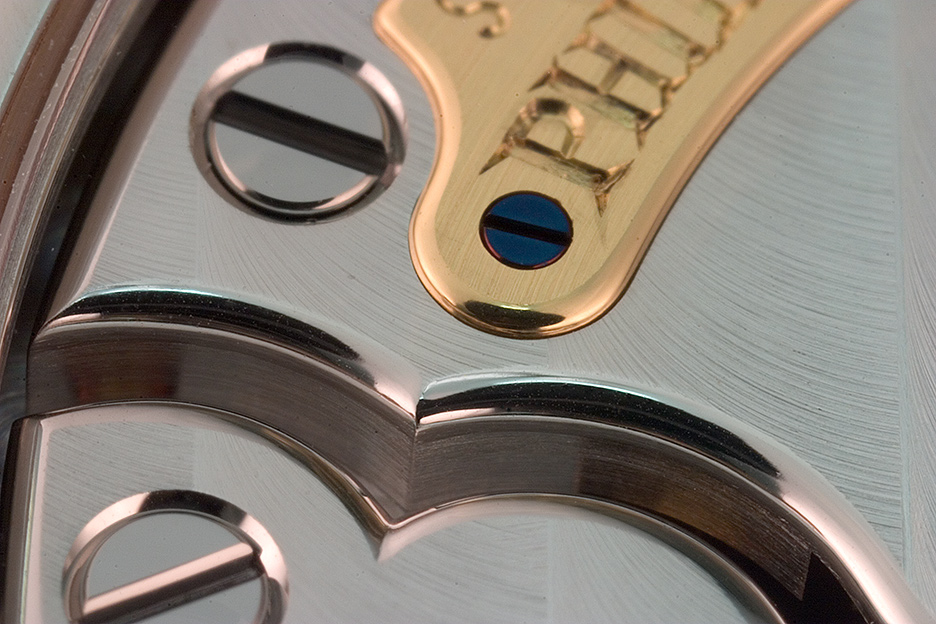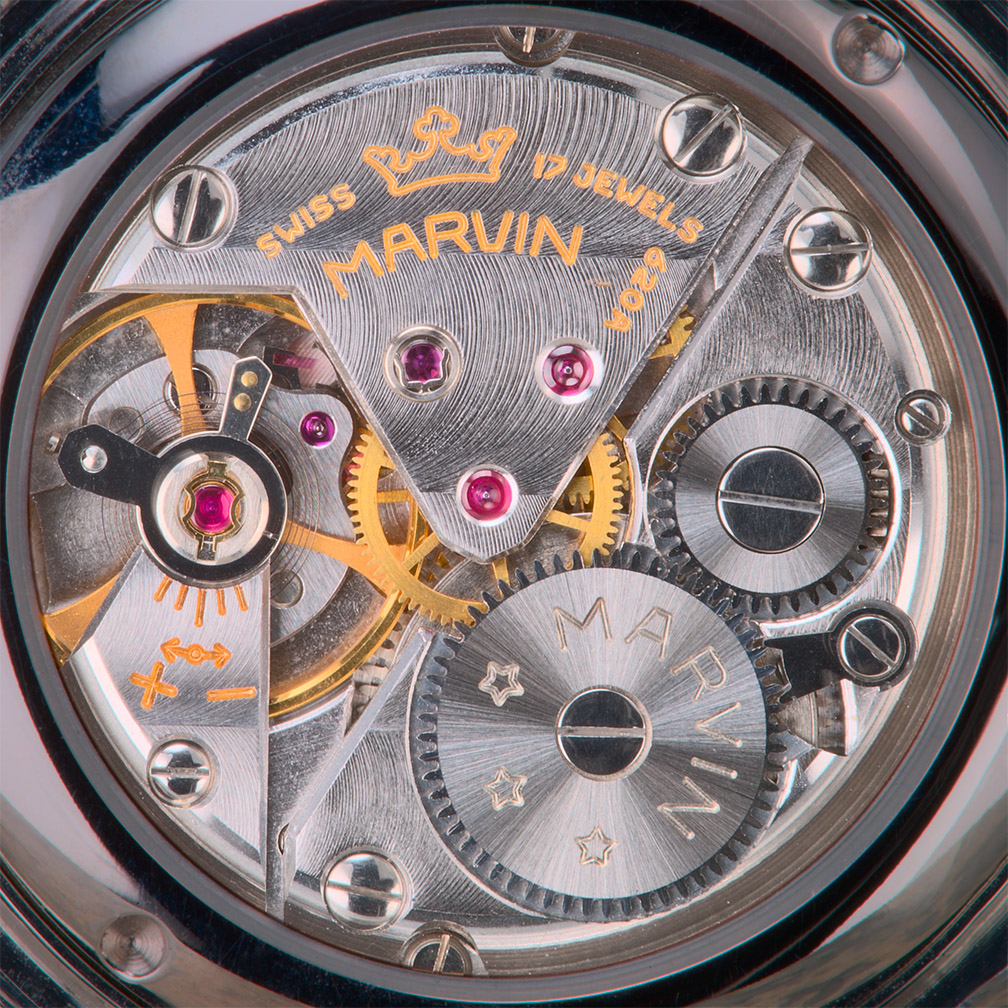
+- Urdebatten / Urforum (https://urdebatten.dk)
+-- Forum: Hovedfora (https://urdebatten.dk/forumdisplay.php?fid=79)
+--- Forum: Urforum (https://urdebatten.dk/forumdisplay.php?fid=70)
+--- Tråd: Finishering af ETA/valjoux værker (/showthread.php?tid=69278)
Sider:
1
2
Finishering af ETA/valjoux værker - Rolf - 29-06-2008
Hej
Jeg starter lige med at tænke højt:
Findes der forskellige "niveauer" af finishering af ETA/valjoux værker. Jeg mener, om det samme 7750 værk hos det ene urmærke - ex. Tag Heuer i modsætning til IWC - kan have en finere finishering, eller bedre, end hos et andet.
Så kommer mit egentlige spørgsmål:
Hvad består en sådan efterbeabejdning egentligt i?
En del af svaret kender jeg: Urværket bliver "pyntet" med eks. cotes de geneve og andre ting. MEN, hvad kan de forskellige urfabrikker mere gøre ved basiskaliberen? Flytte rundt/fjerne dato og visere? Skifte tandhjul ud med andre? En anden rotor? Blånede skruer mm. Ændre gangreserven.
Til hvilken gavn, trimmer "pynten" uret så det bliver mere præcist?
Undskyld at mit spørgsmål ikke er så præcist, men mere har karakter af højttænkning, men jeg tænker på hvad den lille forskel egentligt består i?
Rolf
- RunesS_phpbb3_import15750 - 29-06-2008
Man kan i teorien gøre alt, men det mest alm. er kosmetiske ting. Altså perlage, cote de geneve, anglage, radial slibninger af hjul osv.
Der efter kommer bearbejdning af tolerencer i lejer, viserværket, spærværket og andre steder hvor tolerencer med fordel kan bringes ned.
Tilsidst kan man lave egentlige modificeringer, og større eller mindre ombygninger af værket!
- Rolf - 29-06-2008
Hej
Er du rar og oversætte "anglage" og "radialslibninger"
Rolf
- GTwatch - 29-06-2008
Dertil kommer udskiftning af komponenter.
Der var på et tidspunkt en tråd med et link til en artikel omhandlende de modificeringer, som IWC foretager. Kan ikke lige finde den, med led efter IWC, modificering, Valjoux 7750, etc.
- RunesS_phpbb3_import15750 - 29-06-2008
Rolf Skrev:Hej
Er du rar og oversætte "anglage" og "radialslibninger"
Rolf
Anglage er den skrå slibning, og polering, af en kant på f.eks. en værkplade. Her er et mesterligt eksempel udført af Philippe Dufour!

Radialslibning er slibningen af f.eks. fjederhuse, hvor at slibelinierne går fra midt og ud mod kanterne. Nogle kalder det "sunburst".
Her et vintage "marvin" fra 60'erne. Du kan se radial slibningen på spærhjulet:

- Michael B - 29-06-2008
Citat:Der var på et tidspunkt en tråd med et link til en artikel omhandlende de modificeringer, som IWC foretager. Kan ikke lige finde den, med led efter IWC, modificering, Valjoux 7750, etc.
Er det denne her? Jeg kunne ikke finde ud af at linke, så jeg har indsat den nedenfor. Oprindelig forfatter til indlægget var Taylor210:
Citat:Jeg fandt lige denne meget sjove artikel, som beskriver hvordan IWC modificere deres ETA-værker. Meget spændende læsning synes jeg.
Question:
How can a fine watch manufacturer such as IWC, state, that despite using an ETA-serial calibre, it renders a base ETA movement into a new, superior IWC movement? For example, what changes are made to an ETA-Valjoux 7750 calibre before it is built into an IWC chronograph?
Many watch manufacturers purchase their calibres from the serial base calibre manufacturer ETA. ETA offers a wide variety serving most needs. However, for many watch collectors seeking limited production calibres, this is just the reason to avoid buying a watch with an ETA movement. What if a renowned manufacturer such as IWC Schaffhausen would use the actually very good and tested ETA Valjoux 7750 for its chronographs, after undertaking numerous modifications? What speaks against the ETA movement? Actually, only the fact that it is widely used and therefore not very exclusive. In turn, what speaks for the ETA movement is that, due to the high production, it is a mature and technically impeccable movement. There are no "infant illnesses" and it is constantly developed further. Why therefore should IWC overlook the best serial chronograph-movement? Obviously, there are other alternatives, however, from an economic and technical standpoint, the decision for the Valjoux is guaranteed to be the right move.
Now, what does IWC do with this calibre, and why do they treat it as if it were their own movement? The explanation is pretty simple: IWC purchases the best serial engine and undertakes on that basis the best possible engine tuning. You could say that IWC does what AMG does with Mercedes engines, Alpina with BMW or Abt with VW or Audi engines. Serial engines are used, which in turn are tuned and optimized with the best experience available.
In the case of the Valjoux, the calibre is only bought in its components, never readily assembled. In addition, only the best possible version is purchased - the so-called Chronometer version. When the components arrive in Schaffhausen (IWC's factory location) there are first of all checked by eye, and then randomly checked in detail. Some components of the original ETA calibre are immediately eliminated and are never used by IWC. They are replaced by usually more expensive and better ones.
The entire escapement is a good example. It is ordered separately with different, more exact technical IWC specifications and is only fitted into the calibre at the end of the assembly. Some changes take place even earlier: For instance, all metal bearings of the Valjoux 7760 are replaced by jewel bearings - the Valjoux 7760 (same as the 7750 but in the handwound version) is the basis for the Portugieser Chronograph movements. There is an IWC expert whose job it is to extract by hand all metal bearings from the supplied calibre and replace them with the more expensive jeweled bearings. This is an effort, which will ultimately significantly increase the longevity of the movement.
This exercise is futile in the version 7750 as it only comes with jewels. Instead numerous cogwheels are replaced. For instance, one is part of the winding mechanism, which ETA supplies with three holes in order that it can be worked on by machines and be transported by robot arms. As the holes are drilled, there is some metal, which is pushed over the surface - causing friction with the above-located bridge. Now IWC found out that it is precisely the position of these holes, which will cause fine metallic debris over time to accumulate. In the short run, such metallic debris is not a problem, however over a longer period such debris will cause problems.
Many more examples could be listed at this point, reaching far beyond the space allocated for this article. Therefore, let's come back to the escapement of the movement. Before the escapement is fitted into the movement, a specially trained, female horological expert (so-called regleuse) checks each hairspring for unevenness. How does she do it? Quite simple, she holds the escapement with a special device and turns it. Then she makes sure with her magnifying glass than the escapement unfolds in concentric circles. If not, she manually bends the hairspring to perfection. Again, this in an effort of which the value is only apparent in the sum of all efforts and is ultimately reflected in the accuracy of the movement. The pinnacle of all these tuning efforts lies in completely replacing the barrel. There are some many changes and modifications to the calibre 7750 leading to far lower power requirements of the movement. As a result the original ETA barrel is now far too strong for the modified IWC movement. A "weaker" IWC barrel brings about significant advantages. All moving parts suffer far less wear and tear because there are exposed to far smaller forces - again, this significantly prolongs the average life of an IWC movement.
It is not exaggerated if IWC makes the statement that it treats the ETA movements as if it were an original IWC movement. The numerous modifications and the great care, completely transform the original, mass-produced movement by ETA into another movement. ETA is not necessarily ETA as it is often falsely stated.
- Michael
- Rolf - 30-06-2008
Wow flotte billeder og spændende artikel. Jeg kan godt li' den del med den kvindelige horologiske ekspert, som tuner standard motoren (for nu at blive i det billede som artiklen tegner). Sjovt at det understreges at det er en kvinde??? Gad vide om den helt holder vand.
Nu begynder jeg at kunne forstå hvorfor ure kan være så dyre i forhold til produktionsomkostninger. Det må være tidskrævende med en sådan finishering.
Jeg har så et tillægsspørgsmål. De nye dele som sættes i ETAværket, er det inhouse eller er de også købt ude i byen.
Rolf
- RunesS_phpbb3_import15750 - 30-06-2008
Rolf Skrev:Jeg har så et tillægsspørgsmål. De nye dele som sættes i ETAværket, er det inhouse eller er de også købt ude i byen.
Det kan være begge dele, og er helt efter hvad producent du snakker om. Nogle laver selv, andre får andre til det!
- Mads Gjødesen - 30-06-2008
Der findes mange niveauer hvorpå man kan forbedre et ETA værk. Så man må endelig ikke tro at et cal. ETA 2892 bare er identiske i to ure med dette værk (eller andre ETA´er).
Tror Rune er kommet meget godt omkring finishen. Jeg mener at man groft sagt kan sætte dem op i 4 niveauer:
1: Standart ETA. Fortrinsvis ETA 2824 og ETA/Valjoux 7750. Intet gjort ved værket. Som det forlod fabrikken.
2: Finisheret ETA. Typisk ETA 2892 og 7750. ETA 2824 er for "billig" at foretage disse forbedringer på. Kun Breitling så vidt jeg ved der gør det. Værkerne er på dette niveau kun forbedret rent visuelt. Dvs. lidt poleringer og slibninger.
3: Finisheret og modificeret ETA. Som ovenstående, men man har skiftet elementære dele for at opnå mere stabil gang og bedre holdbarhed. Ofte for at klare COSC men også for at sikre et bedre produkt. Typisk mindre tolerancer og bedre materialer på centrale dele.
4: Som ovenstående men også med visueller modificeringer hvor funktionerne er ændret samt evt. tilføjet funktioner. Dette kræver en gennemgribende modificering og koster...
Grundlæggende kan man sige at jo højere niveau jo højere pris. Det er håndarbejdet der koster og det tager tid.
/Mads
- Rolf - 01-07-2008
Dejligt med lidt struktur - nu tror jeg at jeg er blevet klogere på brugen af ETA værker. Jeg er stadigvæk overrasket over niveauet i finishen, som Rune viste med sine billeder, det har jeg ikke tænkt over før.
Det betyder vel også at et stærkt trimmet ETAværk, egentligt kan være bedre end et in-houseværk fra en af de "store" (tør ikke nævne navne). Eller vil in-houseværker altid have en bedre finishering og bestå af bedre dele, mindre tolerancer end et højt bearbejdet ETAværk?
Mit eget gæt vil være nej - ikke nødvendigvis.
Rolf